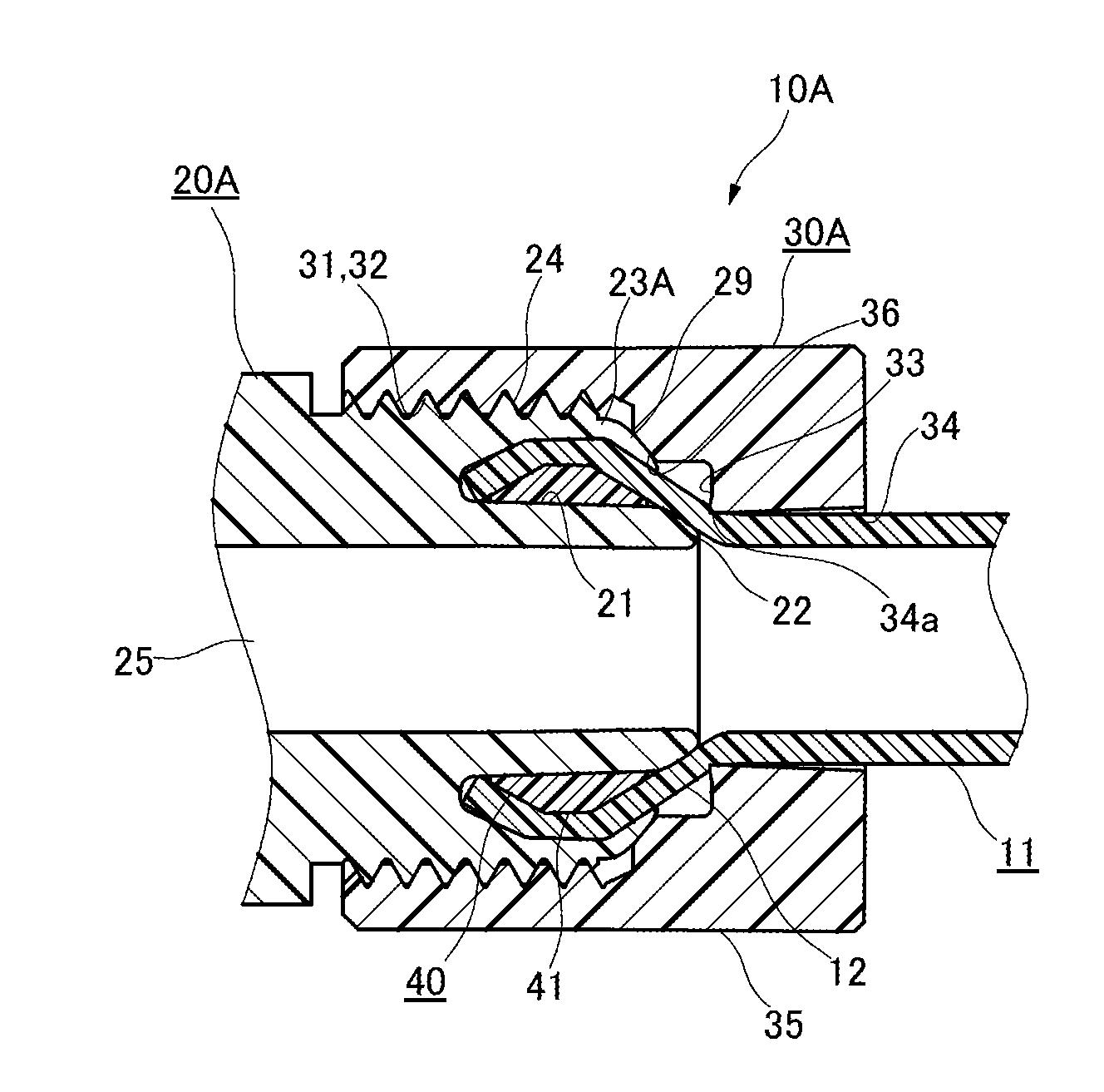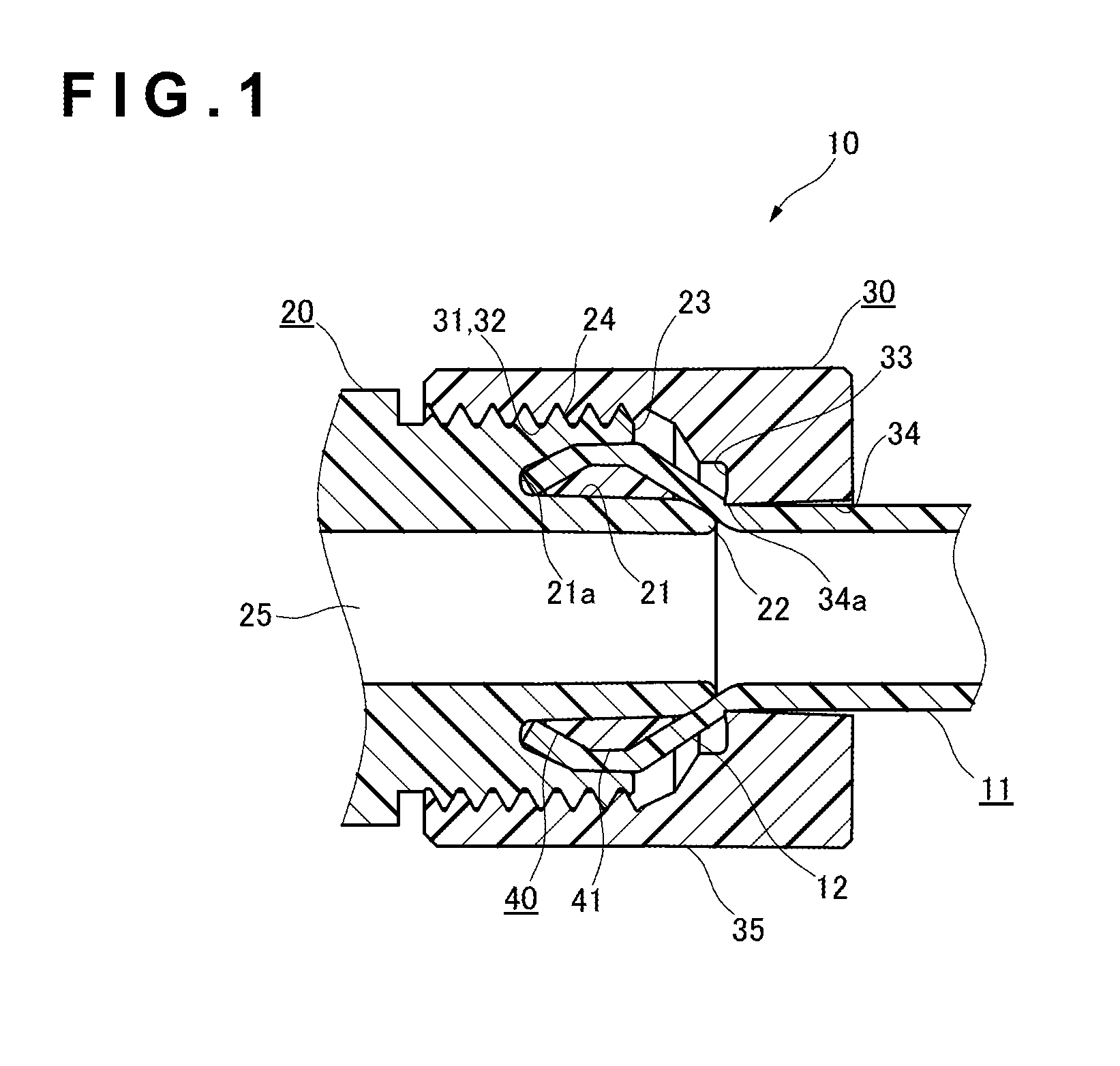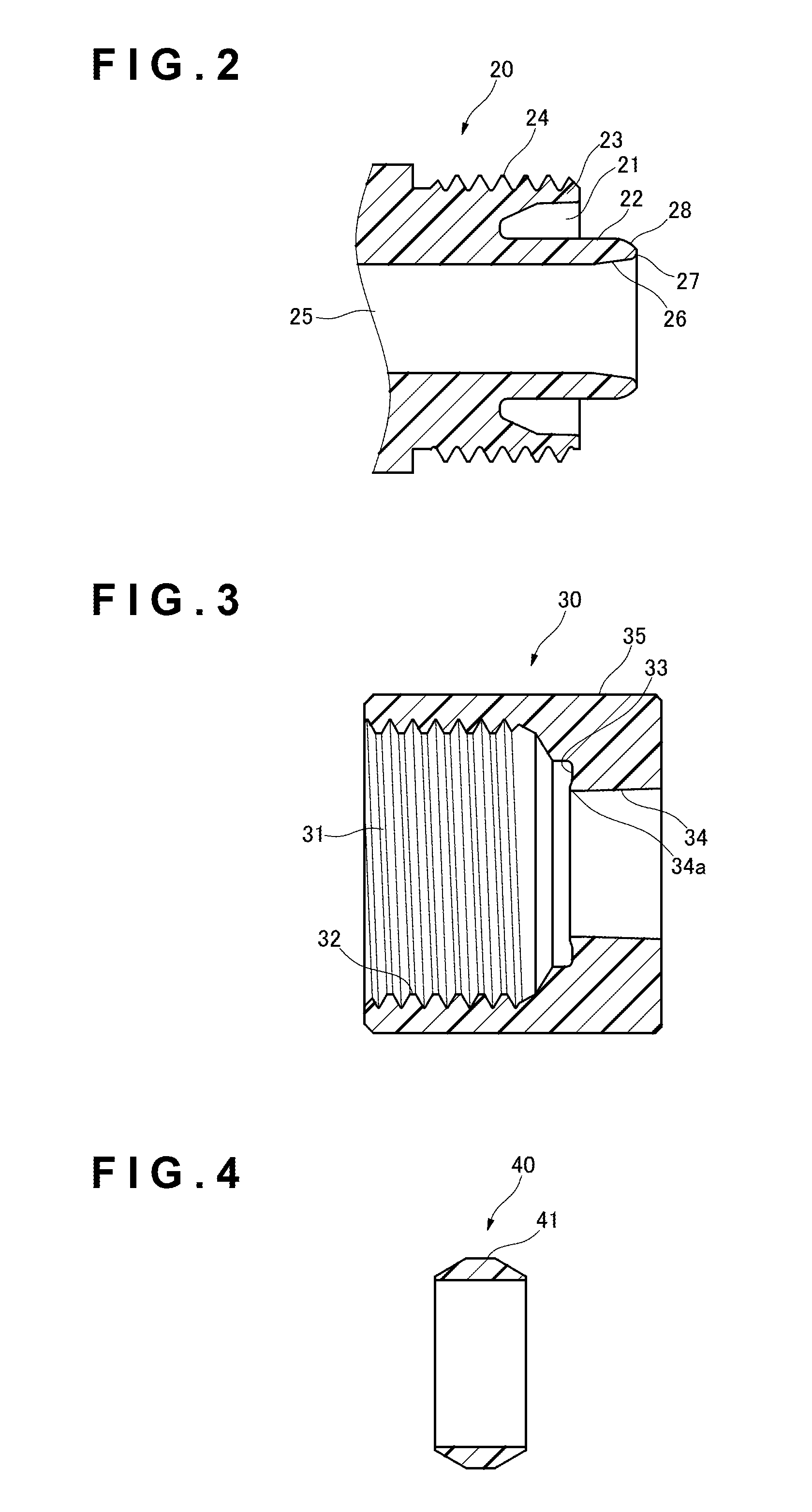Tube coupling joint
- Summary
- Abstract
- Description
- Claims
- Application Information
AI Technical Summary
Benefits of technology
Problems solved by technology
Method used
Image
Examples
first embodiment
[0070]FIG. 1 to FIG. 16 illustrate the present invention.
[0071]FIG. 1 is a critical portion sectional view showing a tube coupling joint 10 according to the present embodiment; FIG. 2 is a sectional view of one end portion of a joint main body 20 of the tube coupling joint 10; FIG. 3 is a sectional view of a cap nut 30 in the tube coupling joint 10; FIG. 4 is a sectional view of a ring 40 in the tube coupling joint 10 and FIG. 5 is a perspective view showing the appearance of the tube coupling joint 10.
[0072]As shown in FIG. 1 to FIG. 5, the tube coupling joint 10 is constituted by a combination of a tube 11, the joint main body 20, the cap nut 30 and the ring 40. With such tube coupling joint 10, the ring 40 is press-fitted to one end portion 12 of the tube 11 for flaring it and holding it in the flared state; the flared one end portion 12 of the tube 11 is coupled to the joint main body 20; and with the tube 11 having been passed through the cap nut 30, the cap nut 30 surrounding ...
second embodiment
[0123]FIG. 17 and FIG. 18 show the present invention.
[0124]A tube coupling joint 10A of the present embodiment is similar, in basic configuration, to the tube coupling joint 10 according to the first embodiment as described above, except that an outer cylindrical portion 23A of a joint main body 20A is different in specific configuration. FIG. 17 is a critical portion sectional view illustrating the tube coupling joint 10A according to the present embodiment, and FIG. 18 is a critical portion sectional view illustrating the tube coupling joint 10A while being assembled. A cap nut 30A in FIG. 18 is shown as a sectional end view.
[0125]With the tube coupling joint 10A according to the present embodiment, the outer cylindrical portion 23A of the joint main body 20A is formed such that, when the inner cylindrical portion 22 of the joint main body 20A has been inserted into the ring 40 while the flared one end portion 12 of the tube 11 has been press-fitted to the innermost recess portion...
PUM
| Property | Measurement | Unit |
|---|---|---|
| Current | aaaaa | aaaaa |
| Current | aaaaa | aaaaa |
| Current | aaaaa | aaaaa |
Abstract
Description
Claims
Application Information
 Login to View More
Login to View More - R&D
- Intellectual Property
- Life Sciences
- Materials
- Tech Scout
- Unparalleled Data Quality
- Higher Quality Content
- 60% Fewer Hallucinations
Browse by: Latest US Patents, China's latest patents, Technical Efficacy Thesaurus, Application Domain, Technology Topic, Popular Technical Reports.
© 2025 PatSnap. All rights reserved.Legal|Privacy policy|Modern Slavery Act Transparency Statement|Sitemap|About US| Contact US: help@patsnap.com



